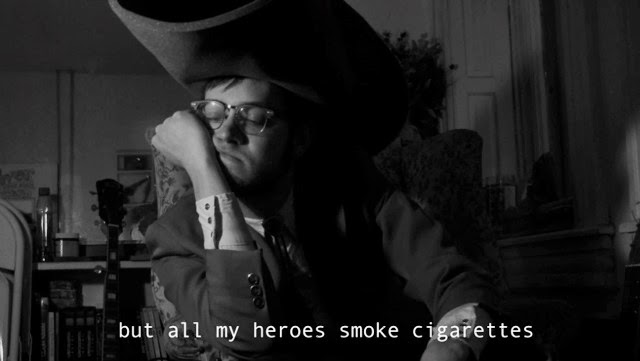Caitlin Harpster: What is the Screenings Series exactly? Could you provide some background information for how the series first came to be?
Owen Smith: Our first go at this series was last year around this same time (March 1 - May 23, 2013). It began as this idea to be able to better utilize the large projector screen we have in the lobby of the museum. I took inspiration from our Gestures series (which dates back to 2001) and thought it would be interesting to ask artists who may not typically work in this type of medium, to experiment and create a "film sketch" to screen in our lobby.
CH: This is your second Screenings Series. What made you want to do this again?
OS: We received very good feedback from the first series and I started thinking about the next. We have this great big projector screen and it's a great platform for artists to be able to experiment and take risks and create something that they normally would not create. It is also a fairly quick exhibition. It is only 12 weeks long, so it's sort of nice to have programming that rotates more quickly. The viewer can come back the very next week and be surprised to see something completely different than the week before.
CH: There were more artists in the last series. Was there a reason why you limited the number of artists from six to four?
OS: Last time there were six artists and the screenings ran for 12 weeks. That left only two weeks for each artist's work to be on view. Two weeks seemed too short. I wanted to expand the screening time of each film without expanding the exhibition time. Three weeks seems like a better balance.
CH: What about the artists?
OS: The artists I choose last year were from all different backgrounds in the arts such as documentary film, live interactive media, photography, etc. Three out of the four artists I choose this year specialize in some sort of film, whether it be experimental documentary like George Cessna, performative video like Di-ay Battad, or computer animation like Nate Lorenzo. I choose Delanie Jenkins specifically because her practice does not involve film or video. She is a sculptor. I am very interested to see what a physical sculptor will do in this situation.
CH: George Cessna is opening the series tomorrow. Can you tell us anything about what to expect?
OS: George's video is called I'm Not A Very Good Cowboy. It is a short quasi-documentary in the sense that it is about himself as a real subject, but it is also a performance by him. It is a silent video with subtitles, about four minutes long. He is struggling with this country-western persona that he has created for himself. I think a lot of people will relate to his search for a genuine connection to a thing he loves.
 |
| George Cessna, I'm Not A Very Good Cowboy, 2014, 4 minutes, silent video with subtitles |
For more information on last year's Screenings, you can check out our posts HERE.

















